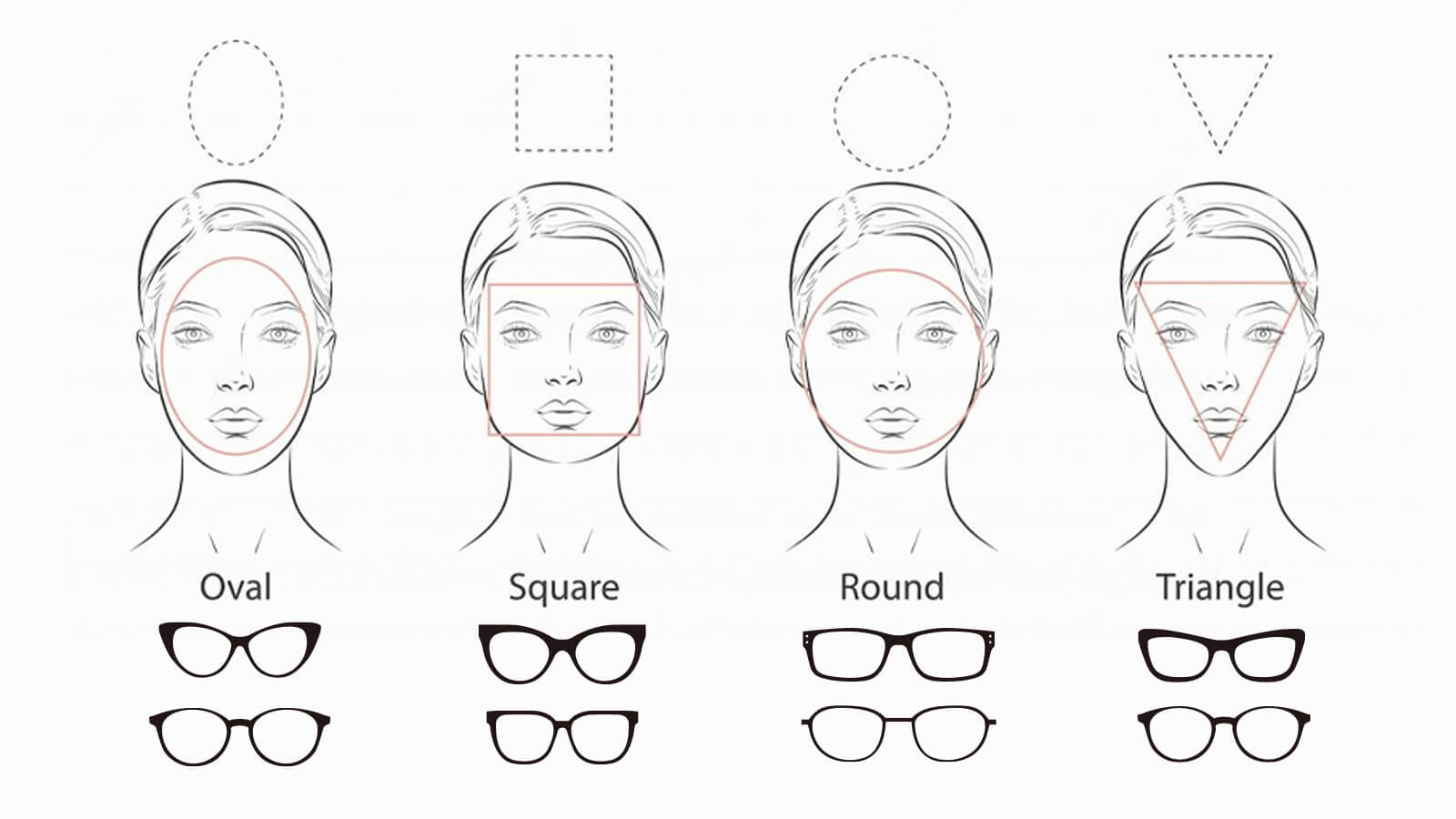
Guide to Picking Glasses That Suit Your Face Shape Perfectly
February 27,2023

What is Boho Style? A Comprehensive Guide to Boho-Chic Fashion
February 13,2025

Virtual Glasses Try On - Find Your Perfect Pair Online
April 02,2024

UV Protection Glasses VS. Blue Light Glasses - Vooglam
July 20,2023

Newest Style Modern Trendy Mens Glasses | Vooglam
March 01,2024

Stylish Reading Glasses: Blending Fashion with Functionality
February 16,2023

What are photochromic lenses & glasses?
September 22,2023

Brown Eyes: The Beauty of the Most Common Hue
September 01,2024

The chubby face glasses for round face female
August 02,2023

What are prisms in eyeglasses?
March 20,2023

What are Bifocal Lenses? - Vooglam
April 14,2023

How to Read Your Eyeglass Prescription?
March 11,2023
What is Axis in Eye Prescription? - Vooglam
Ever stared at your eyeglass prescription and wondered what that mysterious "axis" number means? You're not alone! While most of us recognize terms like "nearsighted" or "farsighted," the axis value often leaves even seasoned glasses-wearers scratching their heads. At Vooglam, we believe understanding your prescription is as important as finding frames that express your unique style.
Let's decode this crucial but often misunderstood component of your vision correction needs. By the time you finish reading, you'll not only understand what that axis number means but also appreciate how it helps your eyewear work its visual magic.
Definition of Axis
In the world of eye prescriptions, the axis is a number between 1 and 180 that indicates the orientation (or angle) of astigmatism correction in your lenses. Think of it as a compass direction that pinpoints exactly where your astigmatism sits on the surface of your eye.
The axis number represents degrees, just like on a protractor you might have used in math class. On this scale, 90 degrees represents the vertical meridian of the eye, while 180 degrees represents the horizontal meridian. Your specific axis number tells the lens maker precisely how to position the cylindrical correction in your lenses so that light focuses properly on your retina.
Importance of Axis in Glasses Prescription
Getting the axis right is absolutely critical for clear vision with astigmatism. Even a slight misalignment can result in:
- Blurred or distorted vision
- Eye strain and headaches
- Difficulty adapting to new glasses
- That unsettling "something's not quite right" feeling
According to research published in the Journal of Optometry (2022), a mere 5-degree error in axis alignment can significantly reduce the effectiveness of astigmatism correction. That's why precision matters so much when crafting your perfect pair of Vooglams!
Understanding Astigmatism and Axis
What is Astigmatism and How it Affects Vision?
Astigmatism occurs when your cornea (the clear front surface of your eye) or lens has an irregular shape. While a perfectly shaped eye is round like a basketball, an eye with astigmatism is more football-shaped, with one meridian steeper than the other.
This irregular shape prevents light from focusing evenly on the retina, causing blurred or distorted vision at all distances—not just near or far. Approximately 1 in 3 people have some degree of astigmatism, though many cases are mild enough that correction isn't always necessary.
For a deeper dive into astigmatism and its effects, check out our comprehensive guide on astigmatism.
Why Axis is Crucial for Astigmatism Correction?
The axis in your prescription serves as a precise GPS coordinate for your astigmatism. Here's why it's so important:
Unlike nearsightedness or farsightedness, which affect your eye uniformly, astigmatism creates different focusing powers along different meridians of your eye. The axis identifies exactly where these different meridians lie so that your corrective lenses can be tailored to your unique eye shape.
When opticians craft lenses for astigmatism, they incorporate a cylindrical correction (more on that later) that must be aligned at a specific angle to neutralize your astigmatism. The axis number tells them exactly where to position this correction. Without an accurate axis, even the perfect cylindrical power won't provide clear vision.
As Dr. Sarah Chen, clinical optometrist at the American Academy of Optometry explains: "The axis is like the address of your astigmatism—without the correct address, your vision correction won't arrive at the right destination."
Signs of Axis-Related Issues in Glasses
If your glasses have an incorrect axis value, your eyes will let you know. Watch for these telltale signs:
Blurred Vision
Even with your new glasses, you might notice persistent blurriness or visual distortion. This is often the first indication that something's off with your axis correction.
Difficult Focusing
You may find yourself squinting or constantly adjusting your glasses position, trying to find that "sweet spot" where things look clearer. This happens because your eyes are working overtime to compensate for the misaligned correction.
Headaches and Eye Strains
When your eyes struggle against incorrect axis alignment, they don't suffer in silence. Frequent headaches (particularly around the temples or forehead) and eye strain are common complaints when axis values aren't quite right.
Off-center Vision
With an incorrect axis, you might notice that your vision seems clearest only when looking through a specific part of your lenses, rather than experiencing consistent clarity across your entire field of view.
If you experience any of these symptoms with new glasses, don't just "power through" hoping your eyes will adjust. According to a study in Clinical Ophthalmology (2023), while minor prescription adjustments do require an adaptation period, persistent discomfort beyond two weeks often indicates a prescription issue that needs addressing.
Common Axis Values and Their Meanings
While axis can technically be any value from 1 to 180 degrees, certain patterns emerge in prescriptions. Here's what different ranges typically indicate:
| Axis Value | Common Description | What It Typically Means |
|---|---|---|
| 180 (± 15°) | Horizontal axis | Corrects "with-the-rule" astigmatism, common in younger patients |
| 90 (± 15°) | Vertical axis | Corrects "against-the-rule" astigmatism, more common with age |
| 45 or 135 | Oblique axis | Corrects diagonal astigmatism, less common but can cause significant distortion |
| 170-180 | Near-horizontal | Slight variation of with-the-rule astigmatism |
| 5-15 | Near-horizontal | Also considered with-the-rule (remember, 180° and 0° represent the same meridian) |
It's worth noting that having a similar axis value in both eyes is common, though not universal. Your unique visual system may require different axis values for each eye.
Eye Prescription Basics
To fully understand how axis fits into your prescription, let's break down the components that typically appear alongside it:
CYL
The cylinder (CYL) value always appears paired with an axis value. This number indicates the amount of lens power needed to correct your astigmatism. The cylinder value can be negative or positive, depending on your doctor's notation preference, but it always works in tandem with the axis value.
For example, a prescription segment like "-1.25 CYL x 180" means you need 1.25 diopters of cylindrical correction positioned at the 180-degree meridian.
SPH
The sphere (SPH) value corrects nearsightedness (negative numbers) or farsightedness (positive numbers). Unlike astigmatism correction, spherical correction is uniform across all meridians of the eye. Your SPH number works alongside your CYL and axis to create your complete vision correction.
OD vs OS
These Latin abbreviations help distinguish between your eyes:
- OD (oculus dexter): Your right eye
- OS (oculus sinister): Your left eye
Some prescriptions might use RE (right eye) and LE (left eye) instead. Either way, each eye typically gets its own complete prescription, including separate axis values.
For a comprehensive breakdown of how to read your entire prescription, visit our detailed guide on understanding OD vs OS.
FAQs
What does 5.0 axis mean in eye prescription?
An axis of 5 degrees indicates that your astigmatism correction needs to be positioned at nearly horizontal (but slightly off-horizontal) orientation. This falls into the "with-the-rule" category of astigmatism and is fairly common. Remember that axis values are measured in degrees from 1 to 180, with 180/0 representing the horizontal meridian and 90 representing the vertical meridian.
Is astigmatism on the 180 axis bad?
Not at all! An axis of 180 degrees simply means your astigmatism runs along the horizontal meridian, which is actually the most common type (called "with-the-rule" astigmatism). This orientation isn't inherently better or worse than any other—it just describes the specific positioning of your astigmatism. What matters most is the cylinder power (CYL), which indicates the severity of astigmatism, rather than the axis number itself.
Research from the International Journal of Ophthalmology (2021) indicates that approximately 60% of people with astigmatism have an axis near the 180-degree meridian. This orientation is so common that it's considered the standard pattern, particularly in younger patients.
This article is not a substitute for a professional diagnosis. Always consult with an eye care professional for proper evaluation and prescription.
Understanding your prescription is the first step toward finding eyewear that not only corrects your vision perfectly but also expresses your unique style. At Vooglam, we believe that eyewear is more than just a vision aid—it's a declaration of independence, a statement of creativity, and a badge of individual expression.
With over 1,800 unique designs in our collection, we've got the perfect frames to complement your prescription and showcase your inner funk. Because when you change the way you see yourself, you change the way the world sees you.
Ready to find glasses that correct your astigmatism while making a style statement? Show off your vision—and your axis—with Vooglam frames designed for fearless self-expression.

Vooglam Blog
Vooglam blog shares professional knowledge about eyeglass frames, lenses, etc., and provides help when purchasing and using eyewear products. At the same time, Vooglam focuses on fashion glasses to interpret the trend of glasses for you.

The Science of Polarized Lenses: How They Improve Clarity and Safety in Snowy Conditions
If you've ever been out on a sunny day in the snow, chances are you know all about snow glare. That painful, sometimes blinding reflection off the bright white of snow isn't just annoying; it can be e
November 26,2025
Don't Spook Your Style: 6 Iconic Halloween Costumes with Glasses
Halloween isn't just about jumping into someone else's skin for a night—it's about finding pieces of yourself you didn't know existed. For those of us who wear glasses daily, the question isn't whethe
October 16,2025
How to Fix a Metal Glasses Arm Hinge: A Step-by-Step Repair Guide
Why Hinge Repairs Are Common—and FixableIf you wear glasses daily, chances are you've dealt with issues related to the hinges on your metal frames. It's one of the most common weak points, and over ti
July 07,2025
Low Nose Bridge vs. High Nose Bridge: How to Find the Perfect Glasses Fit
Most people spend a lot of time thinking about the styles, colors, and types of lenses they want in their glasses. But there's one thing that people frequently forget about that can make a big d
July 07,2025






































